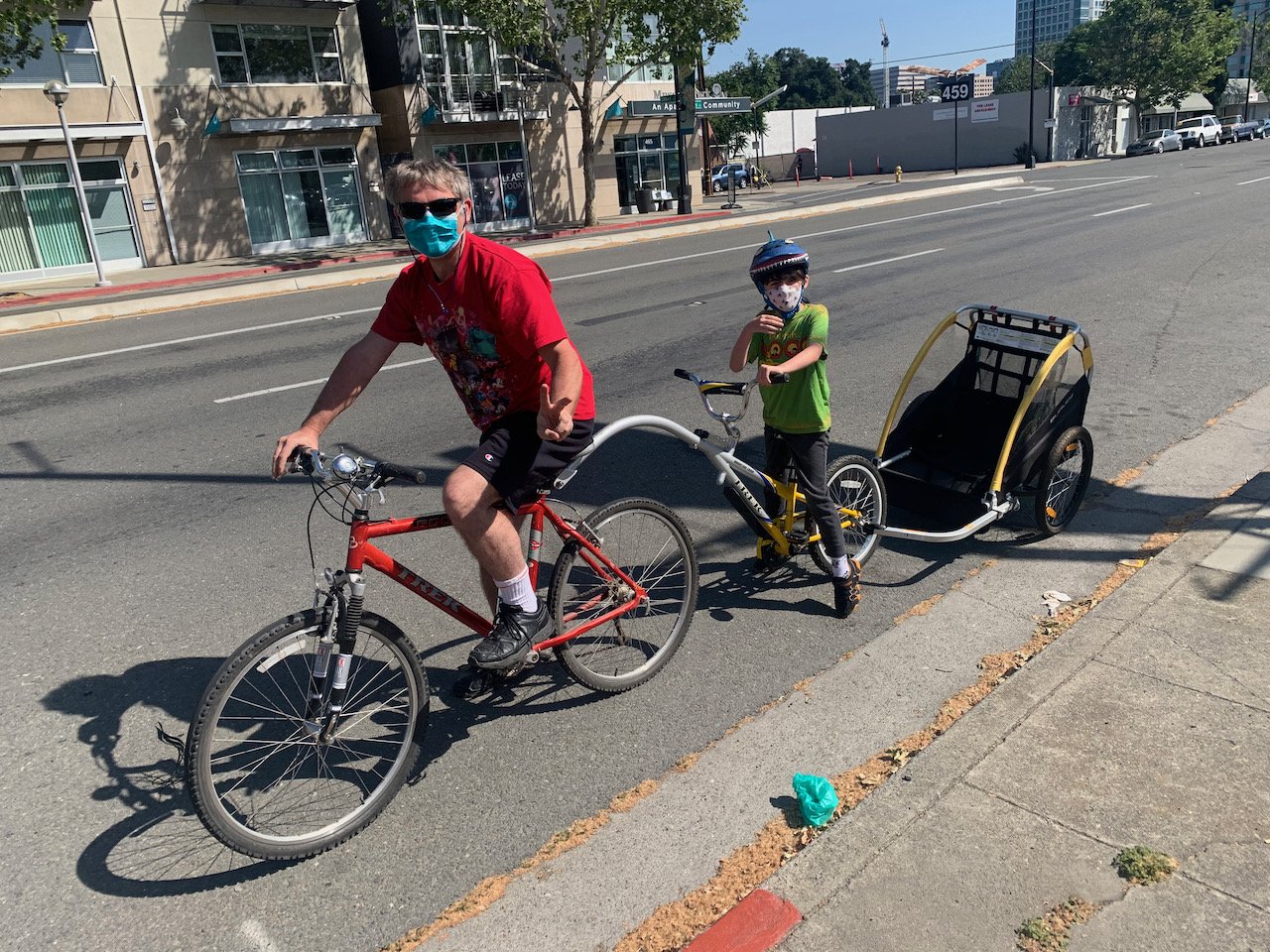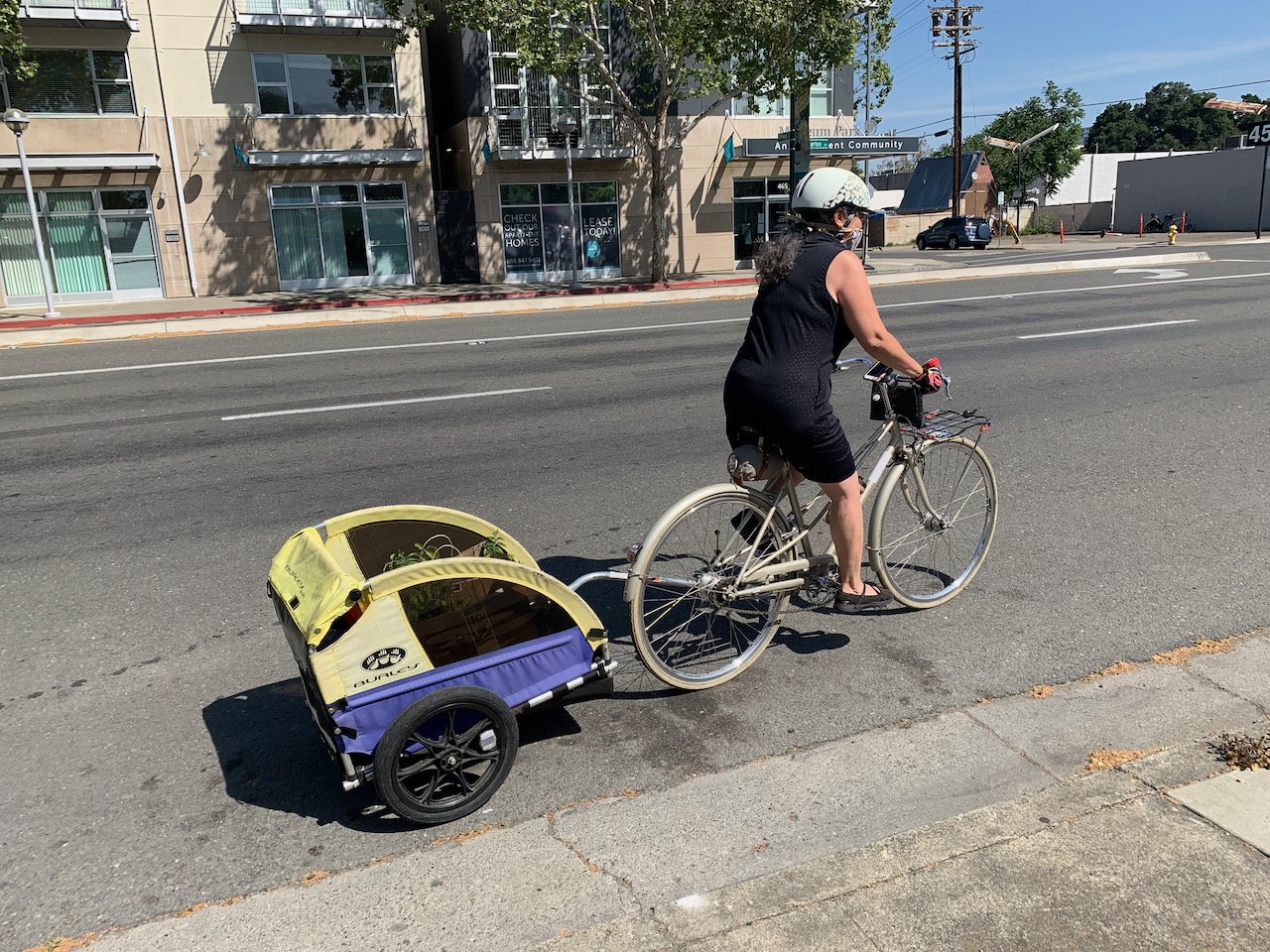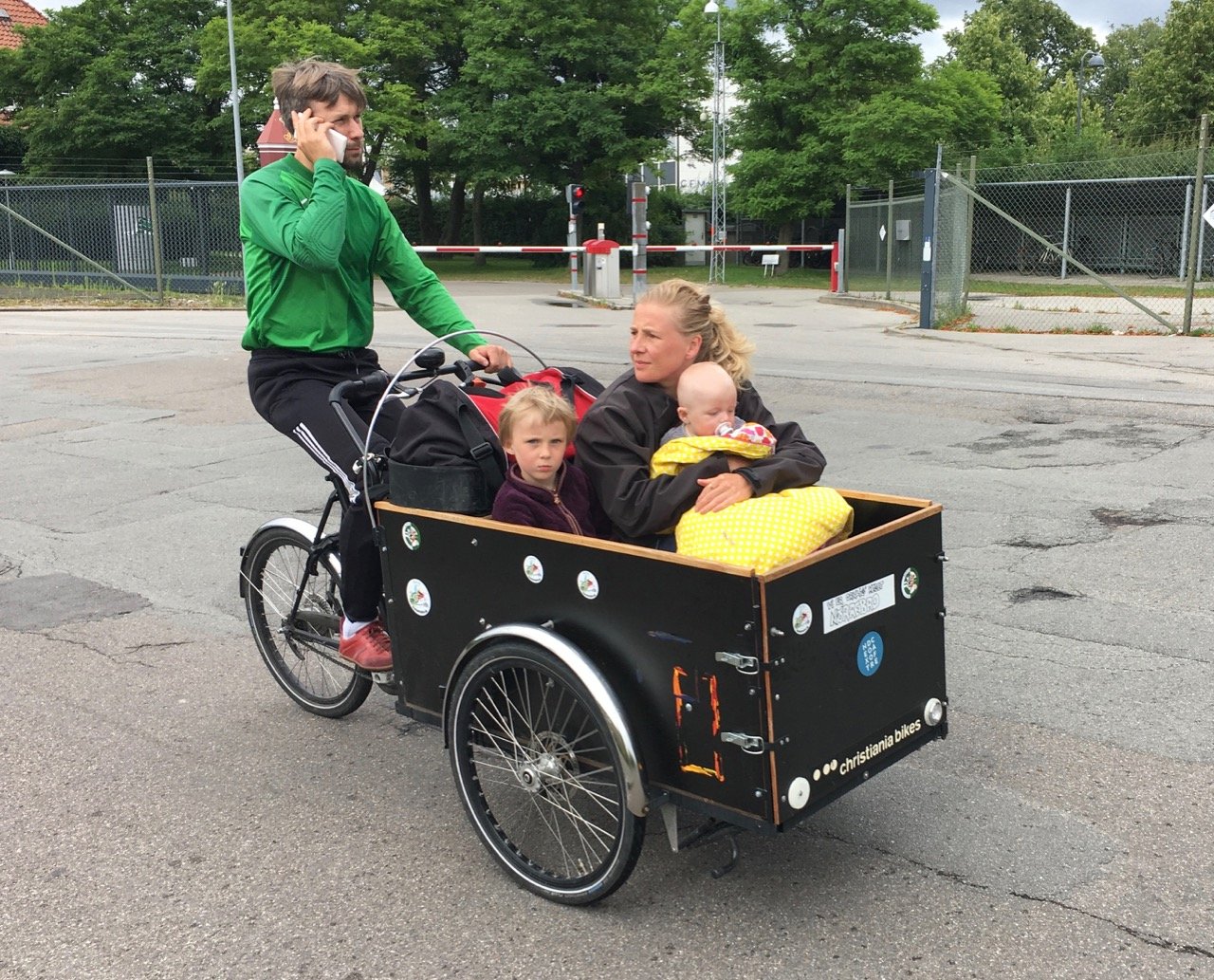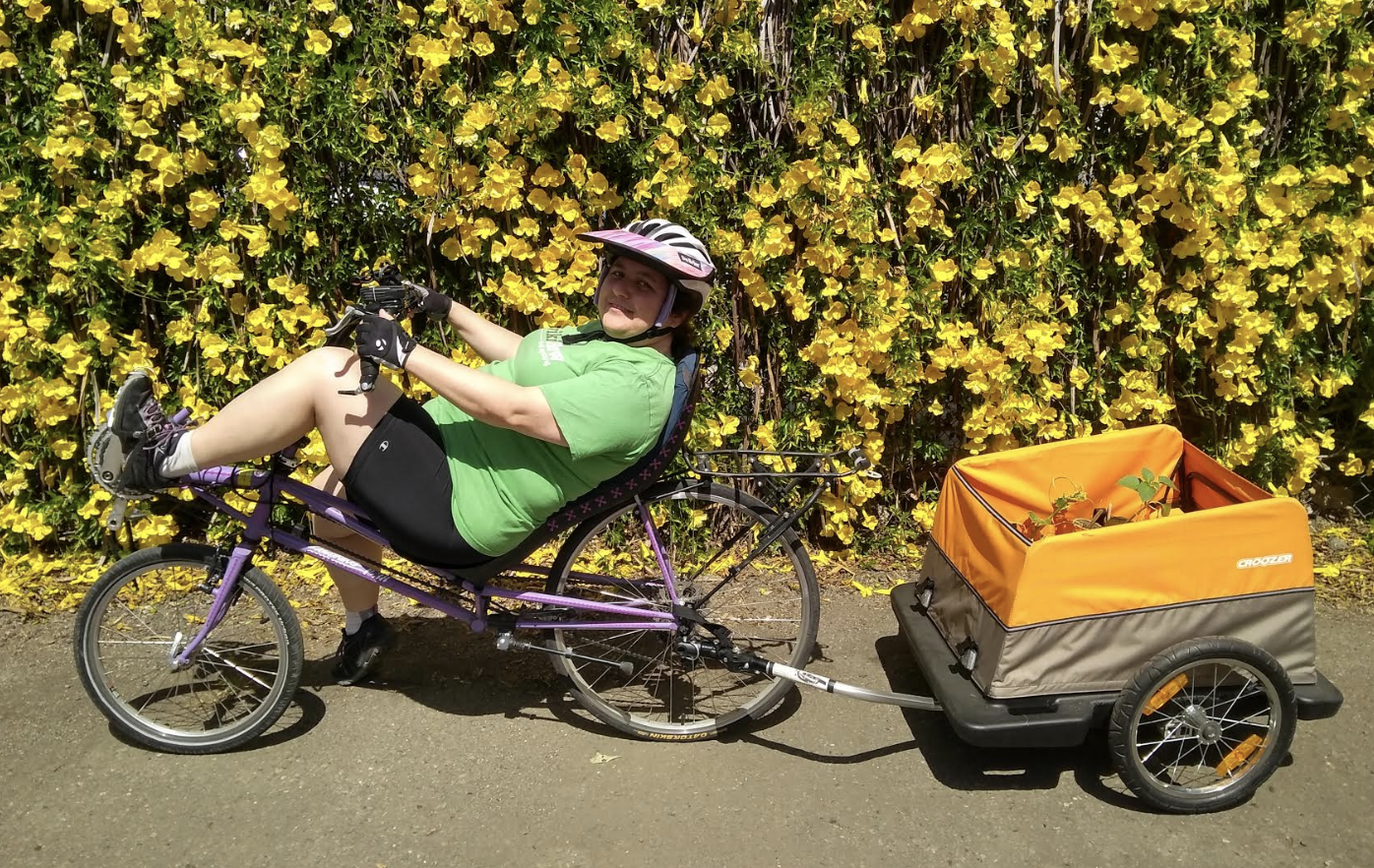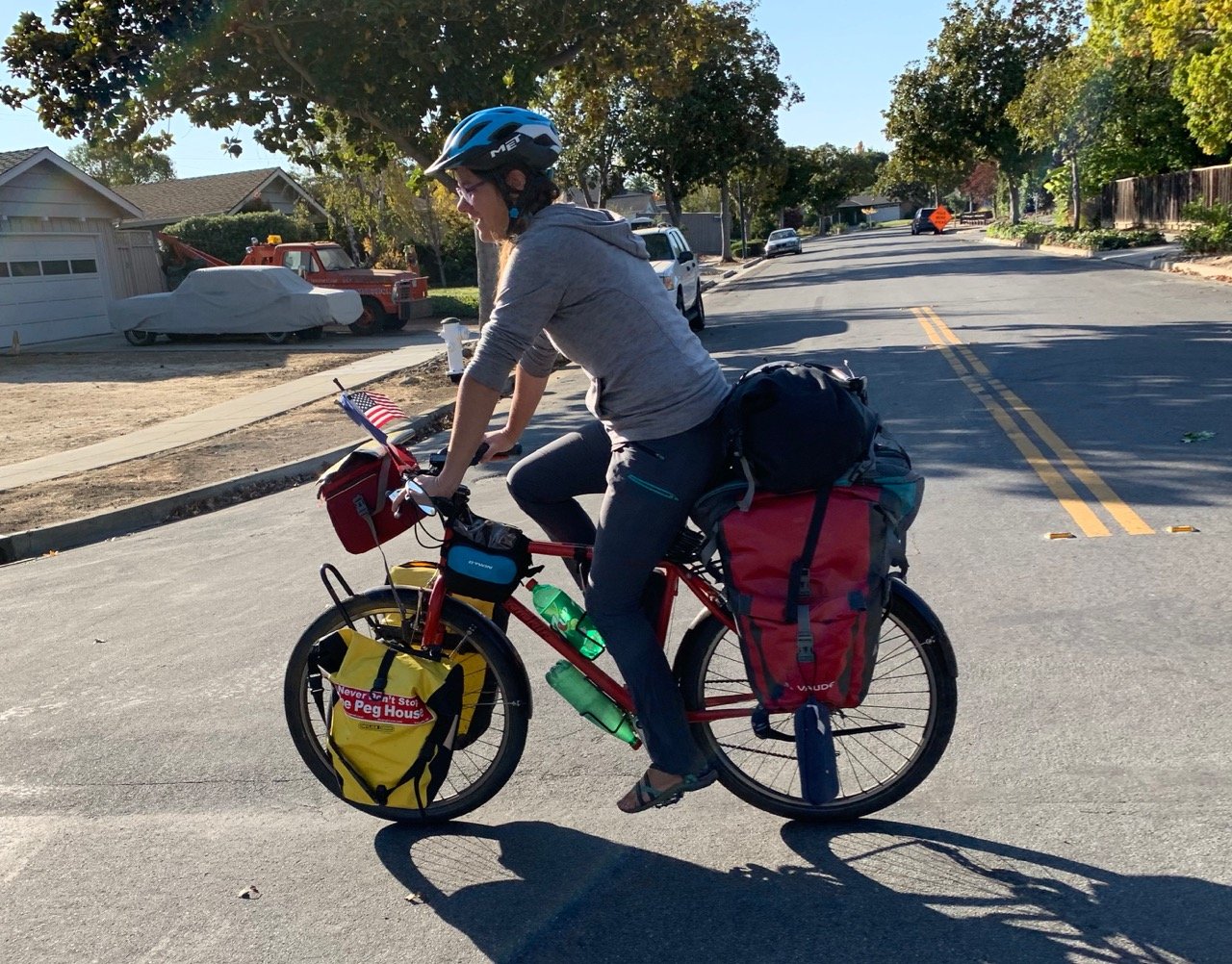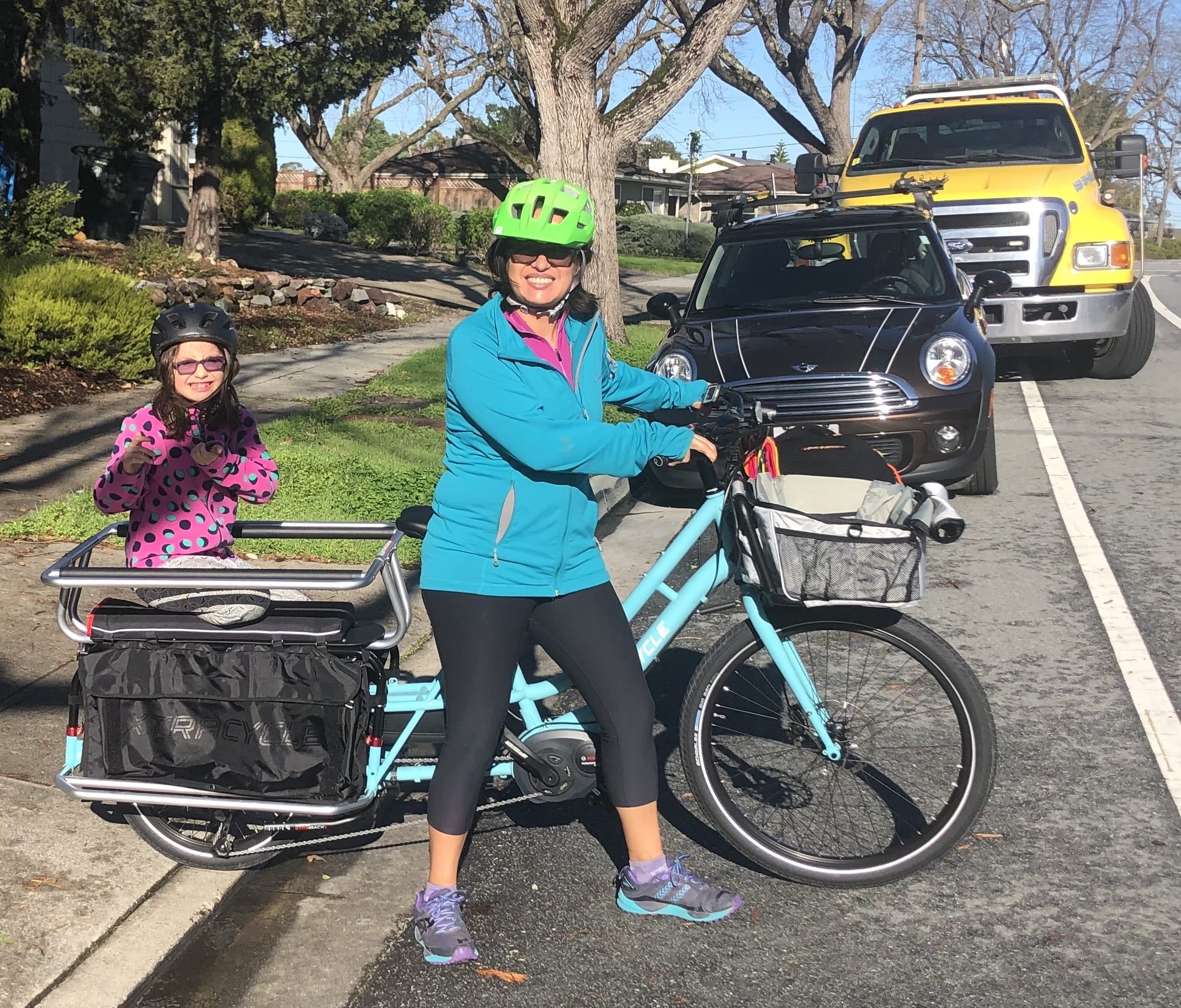Carrying Things by Bike
Bikes are great tools for you to get around and they also can carry just about anything so you can enjoy car free living. Here are a few tips to get you started carrying things by bike. There are videos and links to additional resources at the bottom as well as a table of price ranges for different equipment options.
Small Loads (one grocery bag or less)
A quick shop at a store or a bundle of clothes to wear after you commute to work can usually fit in a backpack or messenger bag. However, both a backpack and a messenger bag may result in a very sweaty back as well as pull on your shoulders and neck.
It is much more comfortable to carry your load on a front or rear rack or a basket on your bicycle. This takes the weight off your body and allows air to flow around you to carry away sweat. Pay close attention to the advertised load capacity of your racks and/or baskets so you know how much they can carry. Some handlebar and seat bags can be attached to your bike without a rack but generally cannot handle as much weight or volume.
IMPORTANT NOTE: Hanging a bag from your handlebars is a very bad idea and should be avoided, as it will affect your steering and may get caught in brakes or front wheel, causing you to crash.
Medium Loads (two grocery bags or less)
A medium sized load (two grocery bags worth) is better carried on your bike and not your body.
Panniers: These are saddle bags for your bike and can be attached to a front or rear rack on each side of your bike’s front or rear wheel. This puts the cargo low to the ground and centered, which keeps the bike very stable even when carrying lots of weight. Different panniers use different methods for attaching to a rack, however, so make sure when puchasing them that they work with the rack you have, or vice versa. Some panniers like the ones shown here have an open top, which works fine but won’t protect your stuff from rain. Most standard panniers have a top that closes over your cargo, or a roll-top which allows for a more flexible amount of carrying capacity. These are very commonly used by bicycle tourists.
Milk crate: Some milk crates are large enough to accommodate two grocery bags (or one dog), but if you go this route make sure it is fastened extra securely to your rear rack, and that the rack is rated to handle this much weight.
Font basket plus a rear rack or rear rack with baskets: Baskets are a great way to be able to throw stuff onto your bike without thinking much about it. An added bonus is being able to reach items stowed in your front basket without even getting off your bike! However, if you will be carrying small items consider putting some sort of lining inside or use a bag so that nothing falls through and gets lost. Also, front baskets have the weight centered up higher on your bike which makes it a bit less stable than rear panniers, so once your bike is loaded up make sure to take it slow at first and give yourself a chance to feel how it handles before taking off, so that you can compensate for any differences. Rear open top metal folding baskets are similar to panniers and can be collapsed to make the bike narrow and opened when needed. Used empty 30 lbs plastic dog food bags turned inside out are cheap, tough, waterproof, and work great to hold large quantities of supplies in baskets – get some for free from a dog owner. Fold over their tops and use a binder clip to keep closed.
Large Loads (three grocery bags or more)
For big loads (three+ grocery bags worth) you can use both front and rear panniers. However for even more space a trailer or specially-designed cargo bike is the way to go.
If you need to carry cargo and/or kids there are some great cargo bike options from Xtracycle or Yuba Bikes, both of which are based in the Bay Area. Another option is a Dutch-style freight bike with a box on the front into which you can put just about anything — even a whole family. Some have just one wheel, others two. The front hauling cargo bikes are great for watching your cargo and/or your kids while you ride.
If you don’t want a dedicated cargo bike, many detachable trailers can accommodate both a child and bags of groceries. Burley, a company based in Oregon, makes a very popular line of lightweight yet strong trailers both for cargo and kids. Many people convert their kid trailers to cargo after their kids are grown. Click here for more family biking resources.
For extremely large loads, there are a number of large cargo trailers on the market. The ones from Surly and Bikes At Work are particularly well known and solidly constructed.
As when buying a bike, try before you buy when shopping for a cargo bike or trailer. See our list of Silicon Valley Bicycle Coalition supporting bike shops that give discounts to SVBC members (most of which carry cargo bikes, trailers, racks, panniers, and other gear for carrying stuff by bike). Not yet a member? Join online to get discounts and other member benefits!
Keep it all securely tied down:
Almost anything can be secured to a bike rack or trailer with bungee cords. Or use old bike tubes either as is or cut into strips. Use ratcheting tie-downs for especially heavy or large loads. Give your bike and/or trailer a shake before riding away to check that everything is secure.
The Art of Carrying Things By Bike
How to Haul Anything by Bike
Typical Costs:
Used dog food bags — Free
Old inner tubes — Free
Bungie cords — $5-10
Milk crate — Free to $20
Ratcheting tie-downs — $10-40
Bicycle basket — $15-100
Front rack or rear rack — $20-160
Panniers — $40-200
Bicycle Trailers — $150-2000
Cargo Bike — $1,000-14,000
Additional Resources:
Credits:
Many thanks to Bike East Bay and Robert Prinz for their guidance and help.
